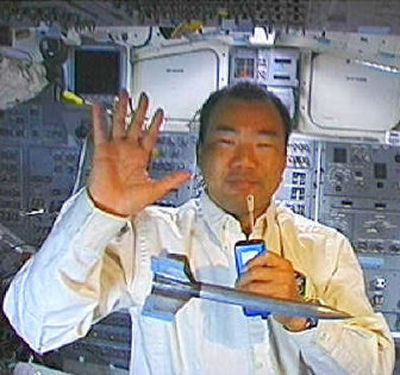Columbia on crew’s mind as Discovery heads home

SPACE CENTER, Houston – After circling the Earth for 13 days, astronauts aboard space shuttle Discovery powered up their spacecraft early today and awaited word from Mission Control to fire their braking rockets and head for home.
Discovery, the first shuttle to return to orbit since Columbia disintegrated while re-entering the Earth’s atmosphere 21/2 years ago, was set to land at Florida’s Kennedy Space Center before dawn.
The accident was on many minds, but flight director LeRoy Cain said his focus would be on bringing Discovery home.
“There’s a lot of things to think about,” said Cain, who also was director for Columbia’s fatal flight on Feb. 1, 2003. “There’s a lot of things to worry about, and that’s what I get paid to do is to worry – and I do it a lot.”
Shortly after 10 p.m. PDT on Sunday, the astronauts closed Discovery’s payload bay doors, a key step in preparing the shuttle to land.
Good weather was forecast for what was to be a relatively uncommon, less-preferred landing in darkness. Of the previous 111 shuttle touchdowns, only 19 occurred at nighttime.
Onboard computers would guide the shuttle’s dangerous, fiery descent until about five minutes before touchdown, when commander Eileen Collins and pilot Jim Kelly would begin manually controlling the 100-ton glider.
After Discovery’s July 26 launch, the shuttle spent nine days hitched to the international space station, where astronauts resupplied the orbiting lab and removed broken equipment and trash – one of the main goals of the mission.
Discovery was the first shuttle to visit the station since 2002.
During the trip, a pair of spacewalking astronauts replaced a failed 660-pound gyroscope, which controls the orientation of the station, and restored power to another. Sunday was the first time in three years that all four of the station’s gyroscopes ran simultaneously.
In a third unprecedented spacewalk, astronaut Stephen Robinson went beneath Discovery’s belly to gently tug out two protruding thermal tile fillers. Engineers on the ground worried the material could cause dangerous overheating during re-entry and could lead to another Columbia-type catastrophe.
Those on the ground learned about the material jutting out from Discovery’s fragile thermal tile belly through intense inspections of the ship using cameras and lasers.
As a result of Columbia, Discovery’s crew inspected their ship for damage on five different days during the mission and also tested repair techniques developed since the tragedy.
Columbia was doomed by a 1.67-pound piece of foam that broke free from an external fuel tank at launch. The foam pierced a hole in the ship’s left wing and as the spacecraft re-entered the Earth’s atmosphere, searing gases melted the wing from the inside, causing the ship to break apart. All seven astronauts aboard were killed.
NASA officials’ excitement over Discovery’s return to space was dampened by video that showed a nearly 1-pound chunk of foam – reminiscent of the one that doomed Columbia – breaking free from Discovery’s external tank shortly after liftoff. The foam did not strike Discovery.
The agency quickly grounded future flights and said after 2 1/2 -years of tank redesign and hundreds of millions of dollars spent on the problem, more work must be done.